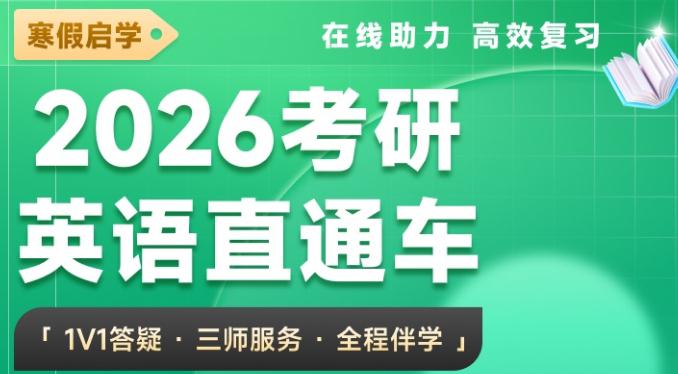1998-2022 ChinaKaoyan.com Network Studio. All Rights Reserved. 沪ICP备12018245号
清华大学环境学院研究生导师介绍:王斌
清华大学环境学院研究生导师王斌介绍如下:
姓 名: 王斌
所在单位: 环境化学教研所
职 称: 副高级
邮寄地址: 清华大学环境学院
办公电话: 010-62795315
电子邮件: thuwb@tsinghua.edu.cn
教育背景
2004.9 – 2009.1清华大学环境科学与工程系,工学博士
2001.9 – 2004.7南京大学环境学院,理学硕士
1997.9 – 2001.7南京大学环境学院,理学学士
工作履历
2012.12-至今 清华大学环境学院,副研究员
2011.11–2012.12 清华大学环境学院,助理研究员
2008.12–2011.11 联合国大学 (日本),Research Associate/Technical Consultant
教学
本科生教育综合改革项目:绿色大学校园实验室(CAL)
本科生课程《校园中的科学》
环33班班主任
学术兼职2012- 中国环境科学学会持久性有机污染物专业委员会 副秘书长
研究领域
1、新兴污染物(POPs,PPCPs等)环境污染分析和源解析
2、新兴污染物(POPs,PPCPs等)多介质环境行为和模型
3、化学品环境风险评价和控制技术
4、新兴污染物(PPCPs)的高级氧化处理技术
欢迎有相关科研兴趣的研究生和博士后联系并加入研究组 http://ecg.env.tsinghua.edu.cn/
研究概况
在研项目
(1)2013-2015国家自然科学青年科学基金—“基于逸度模型和物种敏感性分布的PPCPs 概率生态风险评价模式研究”,负责
(2)2013-2015国家高新技术(863)项目子课题—“水中PPCPs物化去除技术”,负责
(3) 2014-2016 清华大学自主科研计划青年教师基础研究专项,负责
(4)2011-2014法国威立雅国际合作项目— “污水中PPCPs的存在及控制技术”,技术骨干
(5)2012-2014 美国哈希公司项目—“基于哈希LUMIStox300发光菌毒性的PPCPs生态风险评价”,负责
完成项目
(6)2012 环保部环境保护对外合作中心课题—“2012年东亚和东南亚BAT/BEP论坛成员二恶英监测能力建设”,负责
(7)2011-2012 环保部环境保护对外合作中心课题—“中国重点区域重点行业二恶英减排模式研究”,技术负责
(8)2009-2011 日本环境省全球环境研究基金项目(C-083) — “东亚地区POPs越境污染和削减对策研究”,技术负责
(9)2009-2011 联合国大学-岛津国际合作项目—“亚洲沿海水圈环境监测与管理”,技术负责
(10)2007-2008 国家环保总局项目—— “国外化学品环境管理研究”,主要参加
(11)2004-2008 国家重点基础研究发展计划(973计划)项目子课题 (2003CB415007) ——“持久性有机污染物生态风险评价模式和预警方法体系”,主要参加
(12)2002-2004 国家自然科学基金项目(20177008)——“混合有机化合物定量结构-活性相关及联合毒性机制研究”,主要参加
(13)2002-2004 欧盟国际合作项目(ICA4-CT-2001-10039)—— “Management Policies for Priority Water Pollutants and Their Effects on Foods and Human Heath: General Methodology and Application to Chinese River Basins”,主要参加
(14)2002-2003 国家高新技术(863)项目 (2001AA640601)——“内分泌干扰物的筛选和控制技术”,参加
(15)2001-2002 国家自然科学基金重点项目(29837180)——“有毒化学品的环境危险性评价基础研究”,参加
奖励与荣誉
2013 教育部自然科学一等奖(排名第4)
2009 清华大学优秀博士学位论文
学术成果代表性论文(前三作者SCI论文):
(1)Qingwei Bu, Bin Wang, Jun Huang, Shubo Deng, Gang Yu. Pharmaceuticals and personal care products in the aquatic environment in China: A review. Journal of Hazardous Materails, 2013, 262 ,189-211
(2)LipingHeng, XiangfuMeng, Bin Wang, Lei Jiang. Bioinspired Design of Honeycomb Structure Interfaces with Controllable Water Adhesion.Langmuir, 2013, 29(30), 9491-9498.
(3)Zhiguo Cao, Gang Yu, Bin Wang, Jun Huang, Shubo Deng. Human exposure assessment of indoor dust: importance of particle size and spatial position. Environmental health perspectives,2013, 121 (4), a110.
(4)JiangmengKuang, Jun Huang, Bin Wang, Qiming Cao, Shubo Deng, Gang Yu. Ozonation of trimethoprim in aqueous solution: Identification of reaction products and their toxicity. Water Research, 2013,47, (8), 2863-2872.
(5)Zhiguo Cao, Heidelore Fiedler, Bin Wang, Tingting Zhang, Gang Yu, Jun Huang, Shubo Deng. Economic status as a determinant of national PCDD/PCDF releases and implications for PCDD/PCDF reduction.Chemosphere, 2013, 91 (3), 328-335
(6)LipingHeng, Bin Wang, Muchen, Li, Yuqi Zhang, Lei Jiang. Advances in Fabrication Materials of Honeycomb Structure Films by the Breath-Figure Method. Materials, 2013, 6, 460-482.
(7)Bin Wang, Jun Huang, Yong Lu, Shinichi Arai, Fukuya Iino, Masatoshi Morita, Gang Yu. The pollution and ecological risk of endosulfan in soil of Huai'an city, China. Environmental Monitoring and Assessment, 2012, 184(12), 7093-7101.
(8)Bin Wang, Jun Huang, Shubo Deng, Xiaoling Yang, Gang Yu. Addressing the environmental risk of persistent organic pollutants in China. Frontiers of Environmental Science & Engineering. 2012, 6(1), 2-16
(9)Qian Sui, Bin Wang, Wentao Zhao, Jun Huang, Gang Yu, Shubo Deng, ZhaofuQiu, Shuguang Lu. Identification of priority pharmaceuticals in the water environment of China. Chemosphere, 2012, 89(3),280-286.
(10)LipingHeng, Bin Wang, Yuqi Zhang, Lingjuan Zhang, Ben Zhong Tang, Lei Jiang. Sensing Mechanism of Nanofibrous Membranes for Fluorescent Detection of Metal Ion, Journal of Nanoscience and Nanotechnology, 2012, 12(11),8443-8447
(11)Bo Tian, Jun Huang, Bin Wang, Shubo Deng, Gang Yu. Emission characterization of unintentionally produced persistent organic pollutants from iron ore sintering process in China. Chemosphere, 2012, 89(4), 409-415.
(12)Theodore Chao Lim, Bin Wang, Jun Huang, Shubo Deng, Gang Yu. Emissions Inventory for PFOS in China—Review of Past Methodologies and Suggestions. TheScientificWorldJOURNAL. 2011, 11, 1963–1980
(13)Bin Wang, Gang Yu, Jun Huang, Tai Wang, Hongying Hu. Probabilistic Ecological Risk Assessment of DDTs in the Bohai Bay based on a Food Web Bioaccumulation Model. Science of the Total Environment. 2011, 409, 495-502.
(14)Bin Wang, Fukuya Iino, Jun Huang, Yong Lu, Gang Yu, Masatoshi Morita. Dechlorane Plus Pollution and Inventory in Soil of Huai’an City, China. Chemosphere. 2010, 80, 1285-1290.
(15)Bin Wang, Gang Yu, Jun Huang, Tai Wang, Hongying Hu. Probabilistic Ecological Risk Assessment of OCPs, PCBs and DLCs in the Haihe River, China. TheScientificWorldJOURNAL. 2010, 10, 1307-1317
(16)Bin Wang, Fukuya Iino, Gang Yu, Jun Huang, Yixin Wei, Norimasa Yamazaki, Jianfang Chen, Xiaoli Chen, Wei Jiang, Masatoshi Morita. HRGC/HRMS analysis of mirex in soil of Liyang and preliminary assessment of mirex pollution in China. Chemosphere, 2010, 79, 299-304
(17)Bin Wang, Fukuya Iino, Gang Yu, Jun Huang, Masatoshi Morita. The Pollution Status of Emerging Persistent Organic Pollutants in China. Environmental Engineering Science, 2010, 27, 215-225
(18)Bin Wang, Gang Yu, Jun Huang, Yajuan Yu, Hongying Hu, Liansheng Wang. Tiered aquatic ecological risk assessment of organochlorine pesticides and their mixture in Jiangsu reach of Huaihe River, China. Environmental Monitoring and Assessment. 2009, 157, 29-42.
(19)Bin Wang, Gang Yu, Yajuan Yu, Jun Huang, Hongying Hu, Liansheng Wang. Health Risk Assessment of Organic Pollutants in Jiangsu Reach of the Huaihe River, China. Water Science and Technology. 2009, 59(5):907-916.
(20)Bin Wang, Gang Yu, Tingting Zhang, Jun Huang, Tai Wang, Masafumi Nakamura, Hiroshi Handa, Chunching Huang, Hiroshi Murata. CALUX Bioassay of Dioxin like Compounds in Sediment from the Haihe River, China. Soil and Sediment Contamination. 2009, 18(4), 397-411
(21)Tingting Zhang, Gang Yu, Bin Wang, Heidelore Fiedler, Jun Huang, Shubo Deng. Bioanalytical characterization of dioxin-like activity in sewage sludge from Beijing, China. Chemosphere. 2009, 75(5), 649-653.
(22)Bin Wang, Gang Yu, Jun Huang, Hongying Hu. Development of Species Sensitivity Distributions and Estimation of HC5 of Organochlorine Pesticides with Five Statistical Approaches. Ecotoxicology. 2008, 17:716-724
(23)Bin Wang, Gang Yu, Hongying Hu, Liansheng Wang. Quantitative Structure-Activity Relationship and Mixture Toxicity of Substituted Benzaldehydes to Photobacteriumphosphoreum. Bulletin of Environmental Contamination and Toxicology. 2007,78(6):503-509
(24)Bin Wang, Gang Yu, Jun Huang, Hong-ying Hu. The application of QSAR/QSPR in fate evaluation and risk assessment of POPs. Progress in Chemistry, 2007,19(10):1612-1619
(25)Bin WANG, Gang YU, Zulin ZHANG, Hongying HU, Liansheng WANG.Quantitative Structure-Activity Relationship and Prediction of Mixture Toxicity of Alkanols, Chinese Science Bulletin, 2006, 51(22):2717-2723
(26)JinsongZhao, Bin Wang, ZhaoxiaDai, XiaodongWang, LingrenKong, LianshengWang. 3D-Quantitative Structure-Activity Relationship Study of Organophosphate Compounds. Chinese Science Bulletin, 2004, 49 (3): 240-245.
(27)Xinhui Liu, Bin Wang, Zhi Huang, Shuokui Han, Liansheng Wang. Acute Toxicity and Quantitative Structure-Activity Relationships of α-branched Phenylslfonyl Acetates to Daphnia magna. Chemosphere, 2003, 50:403-408.
出版编著:
(1) 王斌,余刚. 持久性有机污染物污染防治发展报告. In: 中国环境科学学会主编, “十一五”中国环境学科发展报告. 北京:中国科学技术出版社. 2012.
(2) 王连生等译. 环境有机化学. 北京: 化工出版社, 2004. (译者,翻译其中第3、4、5、6、9五章,约20万字)
(3) 王连生等编著. 有机污染化学. 北京: 高等教育出版社, 2004. (编者,编写第13、18、19三章,约11万字)
来源未注明“中国完美·体育(中国)官方网站,WANMEI SPORTS网”的资讯、文章等均为转载,本网站转载出于传递更多信息之目的,并不意味着赞同其观点或证实其内容的真实性,如涉及版权问题,请联系本站管理员予以更改或删除。如其他媒体、网站或个人从本网站下载使用,必须保留本网站注明的"稿件来源",并自负版权等法律责任。
来源注明“中国完美·体育(中国)官方网站,WANMEI SPORTS网”的文章,若需转载请联系管理员获得相应许可。
联系方式:chinakaoyankefu@163.com
- 2026完美·体育(中国)官方网站,WANMEI SPORTS英语全程班 寒假班
- 权威高配师资亲授技巧,教研千锤百炼科学提分。直录播课相结合精讲互动二合一,专业团队精细化作文批改。讲练结合,随学随练稳步提升。支持试听~
- 主讲团队:王江涛、谭剑波、董仲蠡、许聪杰、陈志超、潘赟、郑艳彤、易熙人
- 清华大学完美·体育(中国)官方网站,WANMEI SPORTS分数线
- 清华大学报录情况
- 清华大学专业课复习资料
- 清华大学历年完美·体育(中国)官方网站,WANMEI SPORTS下载
- 清华大学研究生院
- 2026完美·体育(中国)官方网站,WANMEI SPORTS英语全程班 早鸟2班
- 2026完美·体育(中国)官方网站,WANMEI SPORTS政治全程班 早鸟2班
- 2026完美·体育(中国)官方网站,WANMEI SPORTS数学全程班 早鸟2班
- 2026完美·体育(中国)官方网站,WANMEI SPORTS英语直通车 长线1期
- 2026完美·体育(中国)官方网站,WANMEI SPORTS政治直通车 长线1期
- 2026完美·体育(中国)官方网站,WANMEI SPORTS数学直通车 长线1期
- 2026完美·体育(中国)官方网站,WANMEI SPORTS英语全程班 寒假班
- 2026完美·体育(中国)官方网站,WANMEI SPORTS政治全程班 寒假班
- 2026完美·体育(中国)官方网站,WANMEI SPORTS数学全程班 寒假班
- 山东大学432统计学全套完美·体育(中国)官方网站,WANMEI SPORTS资料
- 山东科技大学817管理学完美·体育(中国)官方网站,WANMEI SPORTS资料
- 浙江师范大学936物理化学完美·体育(中国)官方网站,WANMEI SPORTS复习资
- 浙江大学855环境学完美·体育(中国)官方网站,WANMEI SPORTS复习资料
- 大连理工大学333教育综合完美·体育(中国)官方网站,WANMEI SPORTS复习资
- 沈阳大学346体育综合完美·体育(中国)官方网站,WANMEI SPORTS复习资料
- 大连大学848传热完美·体育(中国)官方网站,WANMEI SPORTS复习资料
- 大连民族大学338生物化学完美·体育(中国)官方网站,WANMEI SPORTS复习资料

扫码关注
了解完美·体育(中国)官方网站,WANMEI SPORTS最新消息












